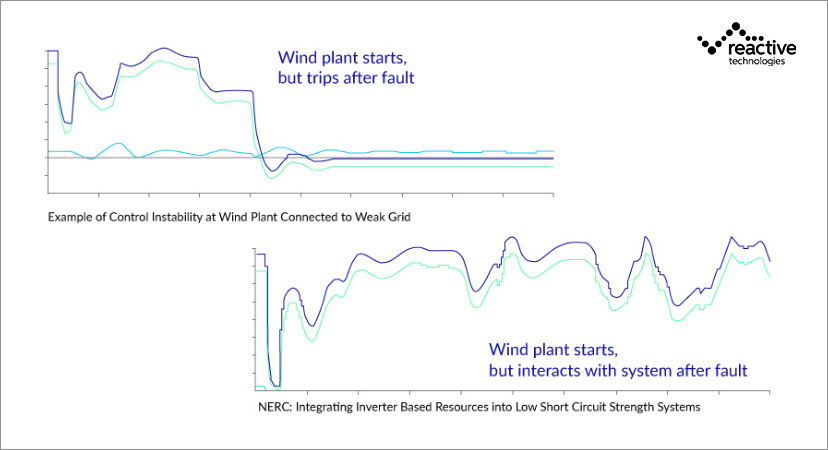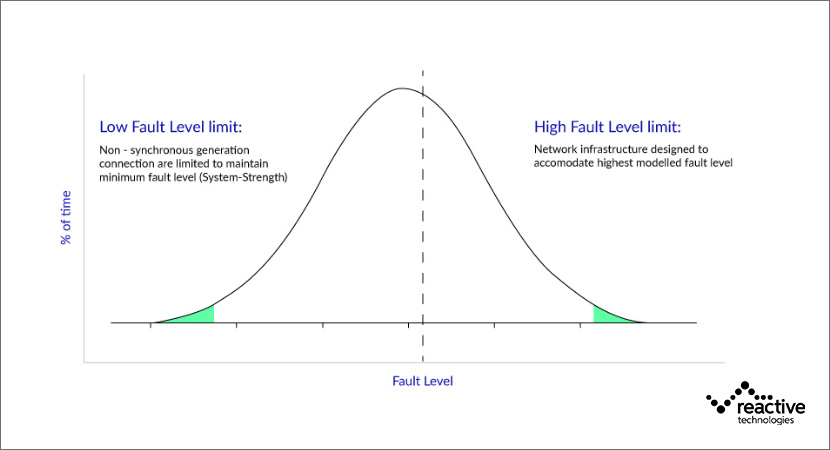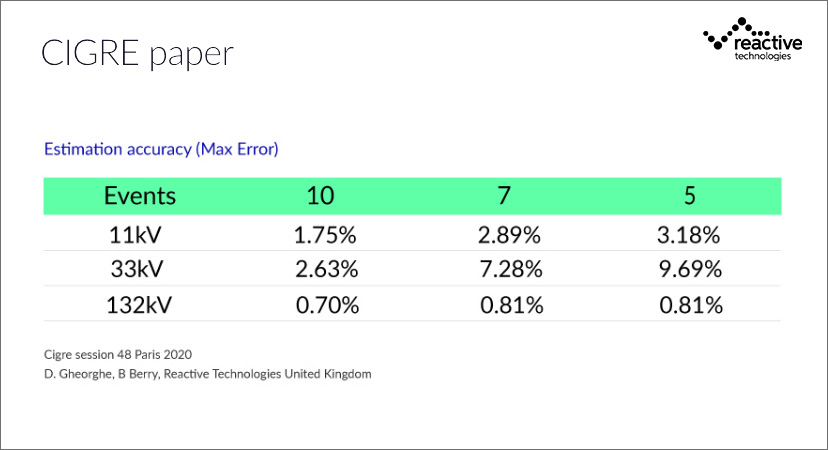
The Situation
Pressure to meet net zero carbon goals is pushing grid operators to transition to more renewable energy sources. Renewables are largely distributed resources – there are many in the distribution network rather than all at the transmission level like centralized generators. With a new generation of energy sources comes new challenges, and maintaining normal levels of voltage and system strength is essential to avoiding risks across the distribution grids.

The Challenge
Historically, grid operators have been concerned by high fault levels or system strength. As the level of synchronous generation increases, so does the strength of a system. If a short circuit happens on a grid, a large amount of current would flow to the fault potentially causing damage to circuit breakers, transformers, or staff working on the grid.
Renewable generators do not produce the same fault current so we see declining system strength in rural areas with high renewable penetration. A short circuit in these areas could be undetected by protection schemes, causing a risk to staff working on the grid.
In both cases, system strength is only modeled, not measured, causing grid operators to make conservative decisions about the operation of the grid and asset investment. For example, a grid may prevent renewables from connecting or running circuits open to increase the level of strength in the grid.
Reactive Technologies’ Grid-Sonar™ technology monitors grid inertia and system strength, providing the accurate, real-time data needed to maintain grid resilience and accelerate grid operators’ transition to renewable energy sources.

What is system strength?
System strength is the change of voltage as it relates to faults or disturbances across the grid.
When out of balance, grid system strength may be too high or too low. When system strength is too high and the grid system is powered by a large number of fossil fuels, there is a greater risk of equipment damage caused by a short circuit. Alternatively, when the grid system is powered by renewable energy sources, the system strength may be too low. When the grid system strength is too low, a fault may go undetected, which can be hazardous and raises the risk of fire.
System strength must be at a normal level at all times in order to maintain grid resilience and avoid hazardous disturbances. This is why grid operators cannot be operating blindly– to maintain adequate system strength levels and ultimately grid resilience, grid operators require access to real-time transparency of grid functions.
The Solution
Until now, there has never been a way to accurately measure system strength. Thanks to Reactive Technologies’ patented, first-of-its-kind Grid-Sonar™ technology, grid operators no longer need to make conservative decisions around renewable energy sources.
Reactive Technologies created the ability to accurately measure system strength by sending small power pulses throughout the grid, and collecting data. This data is uploaded to Reactive’s processing platform and delivered to grid operators’ control rooms. This tool is called Grid-Sonar™.
Accurate System Strength Measurements with Grid-Sonar™
With Grid-Sonar™, Reactive Technologies can open access to the most accurate measurements of system strength available to distribution grid operators and other customers.
Grid-Sonar™ produces small reactive power pulses that probe the local strength of the network. This data gives a precise, real-time picture of how generators–including DERs–are impacting system strength at any given moment.
When system strength is too low or too high, the risk of disruptions increases, such as oscillations, flicker or industrial load failing to start. As a result, distribution grid operators have had to make conservative decisions about renewable energy sources. Not anymore– armed with this complete, up-to-the-minute information, grid operators can make informed decisions that maximize utilization of cleaner, more efficient energy sources while also maintaining safe, reliable operation of the grid.

Grid-Sonar™ has proven to be accurate
The accuracy of Grid-Sonar™is validated at scale on both small and large grids around the world. This accuracy is unprecedented in the power sector. The effectiveness of Grid-Sonar™ is a giant leap forward from today’s status quo. Rather than relying on models, estimates or “effective inertia monitoring,” Grid-Sonar™ empowers grid operators with precise, real-time measurements to inform better decision-making and more effective utilization of renewable power.




